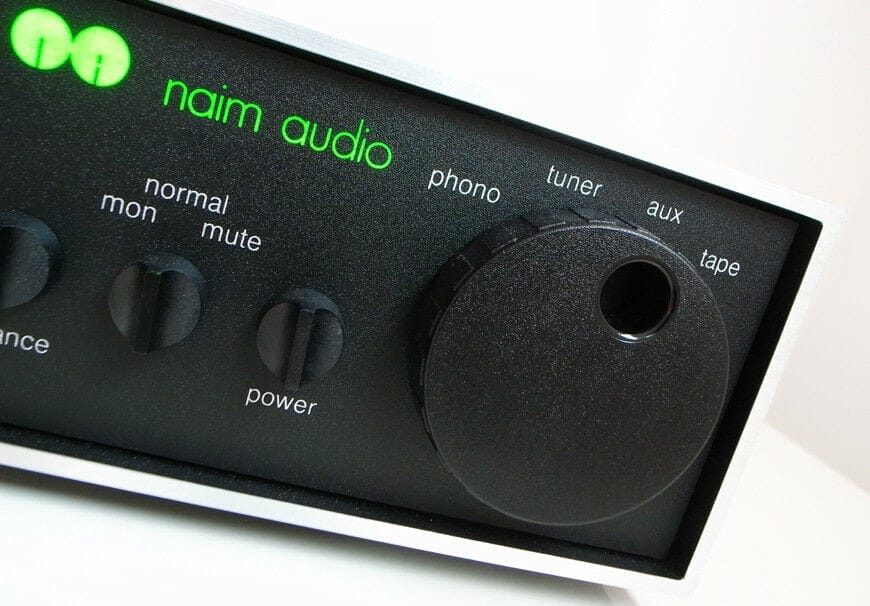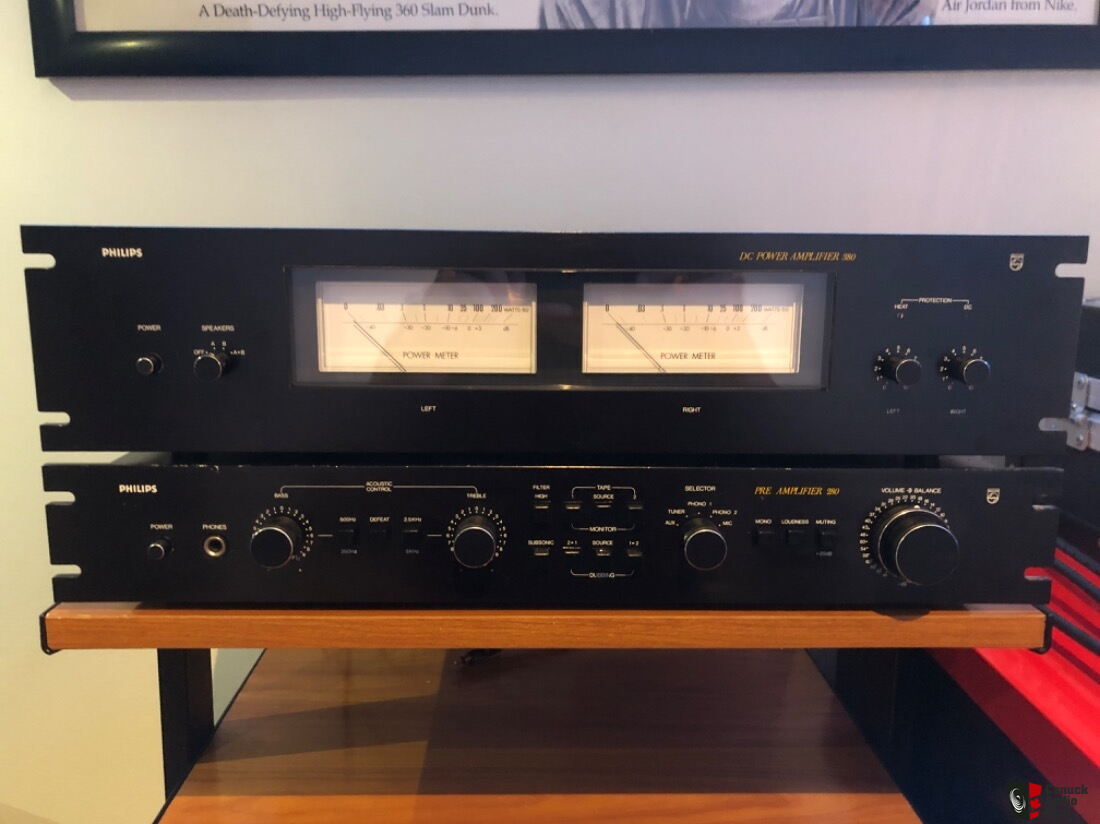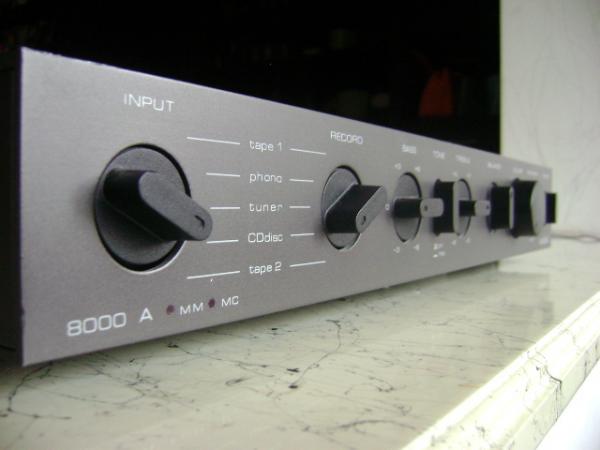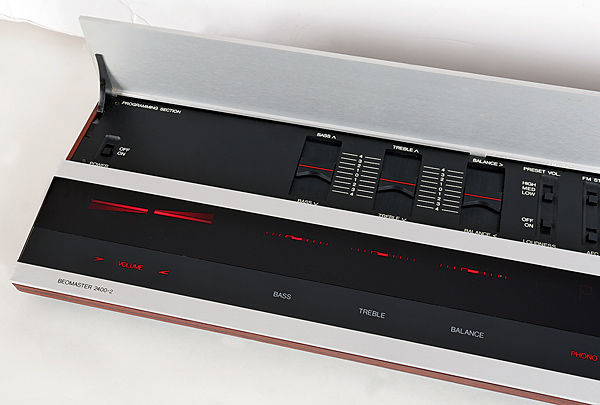The monoblocs Trio/Kenwood Stereo Control Amplifier Model L-07C and DC Power Amplifier Model L-07M are from another era. Hi-fi was a very popular hobby across the Western world – and one of the three essential things to buy, along with a house and a car – when it was launched in 1979 at the height of the audio boom. Designed to be high-end statement pieces with exceptional build quality and performance, these boxes exude quality and sophistication even by today’s standards. They have an incongruously sophisticated and futuristic appearance, which has aged significantly less than many rival high-end designs, thanks to the stunning matt dark-grey finish — neither drab nor regulation black. Even so, you wouldn’t call them ‘beautiful,’ which is why many well-heeled hi-fi purchasers of the time preferred Bang & Olufsen’s magnificent Jacob Jensen-designed 8000 series instead.
The simply designed fascia of the L-07C preamplifier, which includes cutouts for rack mounting, is set forward from the top plate by a stylish wraparound sleeve. It contains power, muting, and subsonic filter buttons, as well as bass, treble, and master volume controls, as well as a tape monitor and an input selection (MM phono, MC phono, tuner and aux). A big covered transformer and power supply are located in a separate portion on the inside. The phono inputs, remote-in, high-quality pre-out phono sockets, both left and right ground connectors, and a fixed mains lead are all located at the back. The machine is 480x100x332mm in size and weights a solid 7kg.
The L-07M monobloc is extremely heavy for its size, as evidenced by a look inside. A big covered power transformer and large reservoir capacitor compartment are hidden behind the thick front panel. A small power supply board with two huge capacitors sits between the output devices, which are flanked by two large heatsinks that pull cooler air from beneath and direct the hot air upwards. Speaker sockets, a ground connector, a power switch, and a fixed power line are all located on the back of the L-07M. Each L-07M is 200x155x390mm in size, weighs 13kg, and has a claimed power output of 150W of Class AB power into 8ohms, which was a huge deal at the time of its release.
The combination sounds quite clean and detailed acoustically. The power amplifiers have a great lack of compression and show no fear of any loudspeaker they are requested to drive – I believe this is one of the few amplifiers capable of driving the heroically inefficient early ‘Series 80’ B&W 801 loudspeakers, for example! With seemingly unlimited bass strength, a wide and deep soundstage, and clear, sparkling treble, listening to this demonstrates just how fantastic a well-done solid-state design can be. It’s not quite tonally warm, but it’s never harsh and has a crystalline clarity to the midband that enables the listener to ‘see through the looking glass’ and into the recording. The music is always clear, crisp, and well-controlled, yet it packs a big impact when it’s needed.
Still, the Kenwood combo isn’t perfect; it’s very ‘Japanese high end,’ which means it’s neat, smart, and sounds ‘expensive,’ but its tonal color is a touch monochrome to me. It can’t display the differences between the acoustic signatures of different recording facilities, for example, very well. It doesn’t have the same rhythmic flow as some other tube and transistor amplifiers. Overall, it’s a beautiful evocation of a bygone age – but it’s not a universal panacea, and at the prices some specimens are fetching now, it’s bad value for money in terms of performance.







